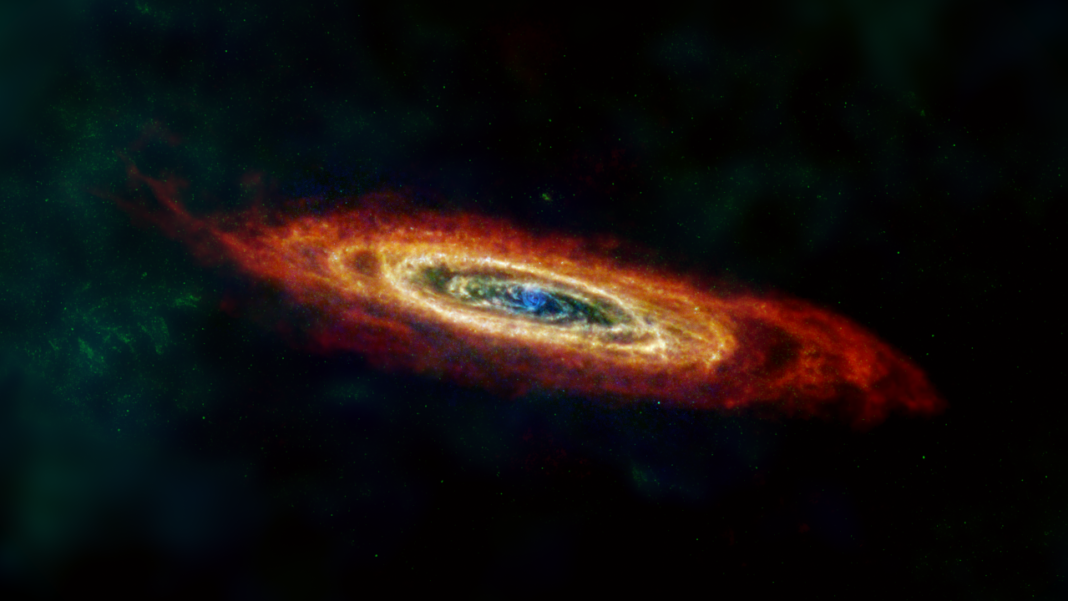Four retired telescope missions are helping astronomers uncover new insights about how dust behaves in galaxies. Astronomers say that the fresh survey of gas and dust surrounding four galaxies , all near our own Milky Way , will provide new information about star formation. “These improved .
. . images show us that the dust ‘ecosystems’ in these galaxies are very dynamic,” Christopher Clark, the imaging team lead and an astronomer at the Space Science Telescope Institute in Baltimore, said in a statement (opens in new tab) Thursday (June 16).
Related : The best Hubble Space Telescope images of all time! The observations were led by data collected from the European Space Agency (ESA)’s Herschel Space Observatory that operated from 2009 to 2013 and detected the thermal signature of dust in far infrared light. The scientists also incorporated data from ESA’s Planck mission, which retired in 2013, as well as NASA’s Infrared Astronomical Satellite and Cosmic Background Explorer missions, which operated in the 1980s and ’90s. Although all space telescopes retire eventually due to component failure or a lack of fuel, their data can persist essentially forever, as long as information is properly maintained in an archive.
And astronomers regularly revisit that old data to calculate long-term changes in galaxies, black holes , exoplanets and other celestial objects of interest and to apply new analysis techniques. The newly produced images focus on interstellar dust and gas to learn more about how the density of dust clouds can vary between galaxies, as well as within a single galaxy. Dust forms as dying stars eject layers of gas, and its path can be altered by the pressure waves from exploding stars, ongoing winds from active stars and gravitational effects from other objects.
All that dust greatly affects astronomers’ work, since it absorbs light from the objects scientists want to study — nearly half of the universe’s starlight, according to the statement. But dust isn’t always a hindrance. Because it contains a range of heavier elements, like those that form planets , studying dust can help scientists understand the evolution of the cosmos.
Data from the Herschel observatory was particularly helpful, providing details on how dust is structured within interstellar clouds, while other telescopes filled in gaps. And the research comes even though the Herschel telescope, the statement said, was not designed to look at light from diffuse clouds, nor in the outer regions of galaxies where there is less gas and dust present. With data from the quartet of observatories combined, astronomers estimated that the dust-to-gas ratio in a single galaxy may vary by a factor of 20, which exceeds by far past estimates.
The interplay of elements between galaxies is quite complex, pointing the way for future studies to zoom in on various processes. — Spectacular Hubble image captures ‘grand spiral’ galaxy — This spiral galaxy looks positively royal in vibrant new image — Hubble Space Telescope images twisted galaxy shaped by a big neighbor “In the densest dust clouds,” the statement said, “almost all the heavy elements can get locked up in dust grains, which increases the dust-to-gas ratio. But in less dense regions, the destructive radiation from newborn stars or shockwaves from exploding stars will smash the dust grains and return some of those locked-up heavy elements back into the gas, changing the ratio once again.
” The results were featured in a press conference at the summer meeting of the American Astronomical Society, held between June 12 and 16. Follow Elizabeth Howell on Twitter @howellspace (opens in new tab) . Follow us on Twitter @Spacedotcom (opens in new tab) and on Facebook (opens in new tab) .
.
From: space
URL: https://www.space.com/retired-telescopes-hidden-features-galaxies-images/



